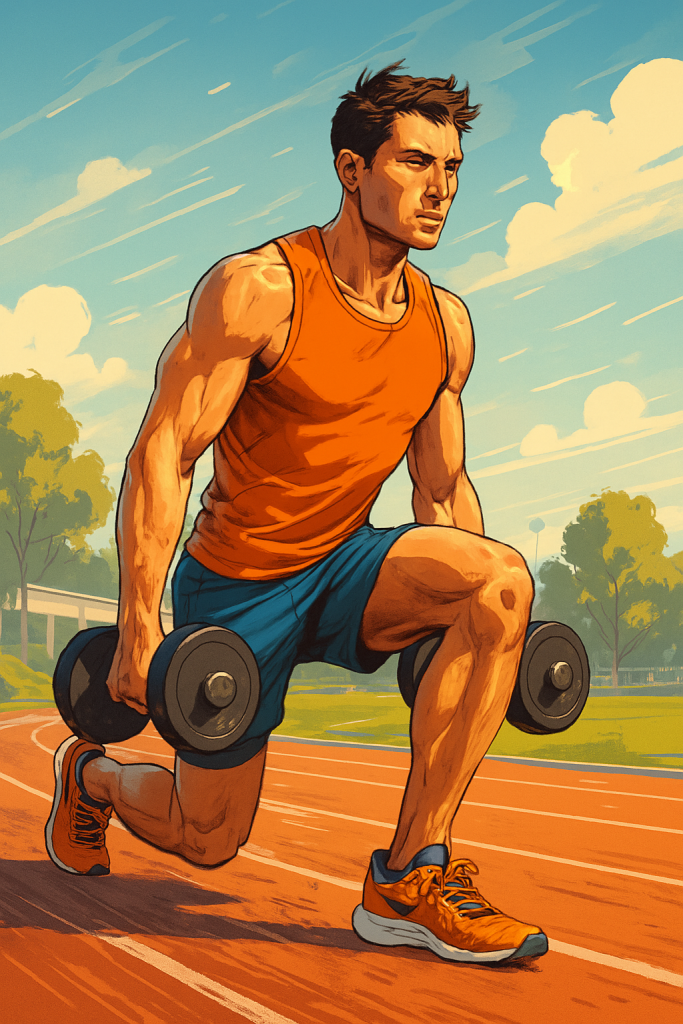Physiotherapy by the Ocean: Recovering from a Kite Surf Injury with BodyCare Pilates
1. From Kite Surf Highs to Painful Setbacks
The northeastern coast of Brazil has always had a mystical pull for adventure seekers. For me, the beaches of Preá and Jericoacoara weren’t just postcard-perfect backdrops of turquoise waves and windswept dunes—they were playgrounds where adrenaline met serenity. When I arrived in Ceará with my kite surf gear packed, my heart raced at the thought of riding some of the best winds in the world.
Kite surfing in Preá is an experience unlike any other: the consistent trade winds push you forward with exhilarating force, while the vast expanse of ocean gives you the sense of absolute freedom. The community of riders here is international yet tight-knit; everyone is bonded by the same hunger for wind and water.
But with high-performance sports comes risk. One afternoon, after hours of pushing my limits, fatigue set in. I attempted a maneuver that my body wasn’t ready for. A sudden twist, an awkward landing, and the unforgiving pull of the kite line left me with a sharp pain shooting down my leg and lower back. Within seconds, my trip went from dream to nightmare.
Pain is never just physical. The psychological weight of an injury, especially when you’re far from home, can crush your spirit. I had planned weeks of kite surfing, running, and exploring. Now I struggled just to walk along the sand.
It was at this low point, limping through Jericoacoara’s sandy streets, that I discovered BodyCare Pilates, a small but vibrant studio run by a team of dedicated women. Their reputation for helping athletes recover had reached me through local whispers. I decided to give it a chance, not knowing it would redefine my entire journey.
2. The Science and Art of Physiotherapy
Physiotherapy is often misunderstood as something people turn to only after surgery or when chronic pain becomes unbearable. But in reality, it is both a preventative and restorative discipline—a science rooted in anatomy, biomechanics, and neurology, but also an art of observing, listening, and guiding the body back to balance.
When I stepped into BodyCare Pilates, the atmosphere was immediately reassuring. The space was calm, filled with natural light and soft music. But what stood out most was the professionalism of the physiotherapists. They didn’t just ask me where it hurt; they analyzed how I walked, how I held tension in my shoulders, how I compensated with one side of my body.
My diagnosis wasn’t catastrophic, but it was serious enough: muscle strain compounded by misalignment in my pelvis and lower spine, common in kite surf injuries. The treatment plan was clear—reduce inflammation, restore mobility, and build functional strength to prevent recurrence.

What impressed me was the integration of manual therapy, targeted exercises, and Pilates-based movement. Physiotherapy here wasn’t passive. I wasn’t just lying on a table waiting for ultrasound or massage. Instead, I was guided into movements that retrained my body, reawakened dormant stabilizers, and gently stretched overworked muscle groups.
The sessions also included education—why I got injured, what warning signs I ignored, and what movement patterns were setting me up for failure. That holistic approach gave me something more powerful than temporary relief: it gave me the tools to understand my own body.
3. Rediscovering Movement Through Pilates
Before this trip, Pilates was something I associated with elite athletes or dancers. I had always imagined it as slow, controlled, and perhaps too gentle for someone who loved explosive sports like running and kite surfing. BodyCare Pilates shattered those preconceptions.
The instructors introduced me to the Reformer, a piece of equipment that uses springs and pulleys to provide resistance. At first, I felt clumsy, my body reluctant to trust movements that required such precision. But soon, I realized how deeply effective it was. Every small motion engaged not just surface muscles but the deeper stabilizers that protect joints and spine.
For an athlete, Pilates is a revelation. It’s not about how much weight you lift but how well you control your body in space. It addresses asymmetries, strengthens the core, and enhances flexibility—all critical elements for injury prevention.
In my case, Pilates became the bridge between pain and performance. The exercises focused on elongating tight muscles, realigning my posture, and activating glutes and abdominals that had been dormant. Within days, I noticed I could walk more fluidly, stand taller, and even sleep without waking from discomfort.
What struck me most was how empowering the practice felt. Physiotherapy had reduced my pain, but Pilates gave me back confidence in my movement. It wasn’t just rehabilitation; it was re-education. I started to feel like an athlete again, not a patient.
4. The Emotional Side of Recovery
Injury recovery isn’t only physical; it’s a mental marathon. The frustration of limitations, the fear of reinjury, the envy of watching others kite surf while you sit on the sidelines—it can wear you down.
But at BodyCare Pilates, I found something beyond exercises. I found community. The women running the studio weren’t just therapists; they were cheerleaders, mentors, and compassionate listeners. They understood that healing requires encouragement as much as protocols.
Every session began with genuine questions: How are you feeling today? Did the exercises reduce your pain? Were you able to walk more comfortably? Those simple acts of care built trust. And when I faltered, they reminded me that progress isn’t linear. Some days are setbacks; others are breakthroughs.
In Jericoacoara, surrounded by endless horizons and sunsets that painted the dunes in gold, I learned the importance of patience. Healing can’t be rushed. Just as the wind dictates when a kite surfer can ride, the body dictates its own pace of recovery.
I journaled my progress daily, noting not just the reduction of pain but also the return of small joys: the first pain-free walk on the beach, the first stretch where my back didn’t spasm, the first deep breath I could take without tension. Those milestones, though invisible to others, were victories worth celebrating.
5. Lessons Learned and Moving Forward
By the time I left Preá and Jericoacoara, I wasn’t just healed—I was transformed. My body felt stronger, more aligned, and more resilient than before the accident. More importantly, I had gained knowledge and habits that will shape my training for years to come.
Here are the key lessons I carry with me:
- Listen to the body’s whispers before they become screams. Fatigue, stiffness, or imbalance are early warnings. Ignoring them leads to injury.
- Physiotherapy isn’t just about fixing pain—it’s about optimizing movement. Every athlete, from casual runners to professional surfers, can benefit from periodic assessments.
- Pilates is the secret weapon for athletes. It strengthens what’s weak, lengthens what’s tight, and balances what’s imbalanced. It’s not soft; it’s smart.
- Healing is holistic. Mental health, environment, and support systems are as crucial as exercises and stretches. Being treated with kindness at BodyCare Pilates made as much difference as the treatments themselves.
- Injury can be a teacher. Though I wouldn’t wish pain on anyone, this experience reminded me that setbacks are opportunities to rebuild stronger and wiser.
As I write this for runningwithjoe.com, I’m back to running, training, and even kite surfing—with a newfound respect for recovery. The beaches of Ceará gave me adventure, but the people at BodyCare Pilates gave me resilience.
If you ever find yourself in Jericoacoara—whether as a kite surfer, runner, or simply a traveler—remember that the body is your most important gear. Take care of it, listen to it, and if you need help, know that there’s a dedicated team ready to guide you back to health.
Contact: +55 88 999-18418
Instagram: https://www.instagram.com/body.carepilates/
Physiotherapy by the Ocean: Recovering from a Kite Surf Injury with BodyCare Pilates Read More »










